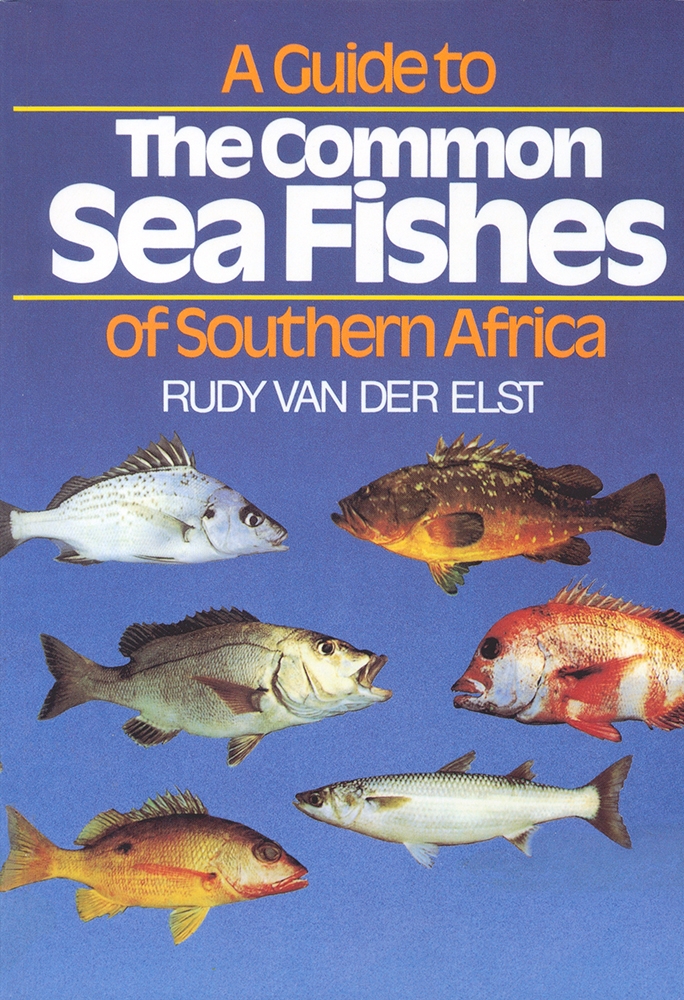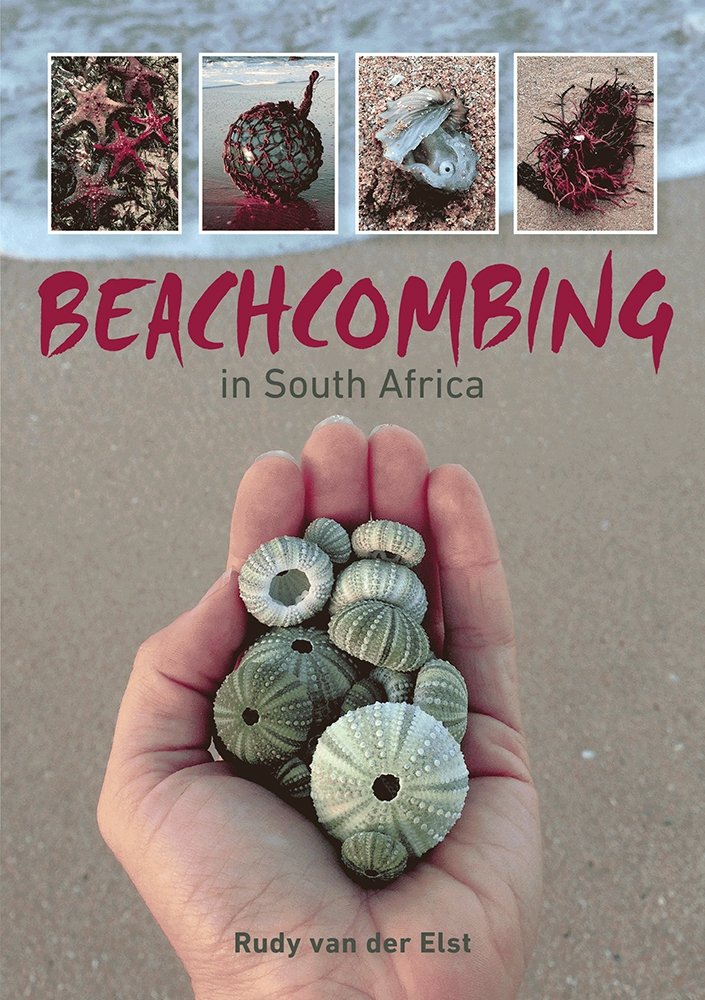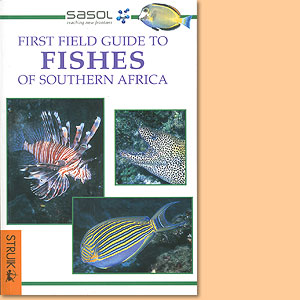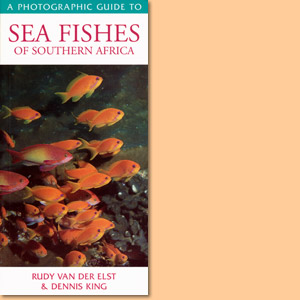A Guide to the Common Sea Fishes of Southern Africa, by Rudy van der Elst
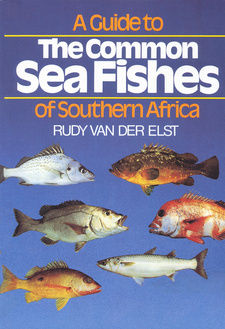
A Guide to the Common Sea Fishes of Southern Africa, by Rudy van der Elst. Random House Struik (Pty) Ltd. Imnprint: Struik Nature. 4th edition, Cape Town 2000. ISBN 9781868253944 / ISBN 978-1-86-825394-4
A Guide to the Common Sea Fishes of Southern Africa, by Rudy van der Elst. Oceans probably represent the most important life-support system on earth.
Their influence on climate, oxygen levels and the cycling of nutrients is critical to the survival of life as we know it. In addition to these physical processes, man himself is becoming increasingly dependent on the sea's natural resources, its animal, vegetable and mineral wealth, to secure his future on this planet. Exploration of materials, such as oil beneath the sea-bed and manganese nodules on the bottom, is comparatively recent, but already the levels of exploitation are intense. On the other hand, man has used the ocean's renewable resources, its fish and other animals as well as plants, from the earliest times. Such harvesting by humans has, until this century, made little impact on the abundance of marine organisms. Even as recently as the 1930s, the total world catch of fish and shellfish was less than 20 million tons a year. But with continuous technological improvements to fishing gear, acoustic fish finders, satellite navigation and advanced on-board processing, this catch has quadrupled to reach 90 million tons. However, catches have now levelled off, though human populations, and hence demand, continue to spiral. This increased pressure has had a dramatic effect, with many fish species pushed to and beyond the limits of their recuperative capacity. Many fisheries are now operating at a financial loss and require to be subsidized, a dangerous precedent which poses even greater threats to resources. Regrettably, such examples of marine mismanagement are not rare and that they happen clearly illustrates not only man's expanding need for protein, but also his greed and, possibly most significantly, his ignorance of the delicate fabric of marine life and food webs. Only when the biological processes that govern life in the oceans are properly understood can real progress be made towards optimal and sustained exploitation of the sea. Much work in this field has already been undertaken by marine researchers worldwide, but this knowledge is of limited value if retained only by a few select scientists. Certainly, it is the obligation of every scientist to publish his or her findings, but too often such literature lies hidden on the shelves and in the stackrooms of institutional libraries. It is of equal, indeed, possibly of greater importance to reach the 'end user', in this case, the fisherman himself. For whether his interest is food or gamefish, commercial gain or recreation, it is only through his personal involvement and well-informed attitudes that marine fisheries can be managed with a responsibility that will not only ensure a high yield of protein for generations to come, but also provide a great many people with endless hours of sheer good sport. As a guide, this book is intended to help people identify fishes they may see or catch. But it is also intended to establish a rapport between science and anyone with an interest in the sea and its fishes. To this end, innumerable scientific papers and original research reports were consulted. Hopefully it will broaden the knowledge of many fishermen and, more generally, stimulate an awareness of the fascinating diversity of fish inhabiting the coastal waters of southern Africa. As our coastline is bordered by two oceans and embraces both tropical and temperate waters, many of the fishes encountered here have a far wider world distribution and the information in this book could well prove useful along the shores of other countries. [...]
This is an excerpt from A Guide to the Common Sea Fishes of Southern Africa, by Rudy van der Elst.
Author: Rudy van der Elst
Editor: Peter Borchert
Publisher: Random House Struik (Pty) Ltd
Imnprint: Struik Nature
4th edition, Cape Town 2000
ISBN 9781868253944 / ISBN 978-1-86-825394-4
Softcover, 17 x 24 cm, 400 pages, numerous color photos and bw-illustrations
van der Elst, Rudy im Namibiana-Buchangebot
A Guide to the Common Sea Fishes of Southern Africa
Practical, easy to use and authoritative guide! More than 300 common sea fishes ot the coastal regions of Southern Africa.
Beachcombing in South Africa
Beachcombing in South Africa is a friendly guide to the sights and treasures to be found on the region's seashores.
First Field Guide to Fishes of Southern Africa
These little guides are an invaluable resource for beginners
A Photographic Guide to Sea Fishes of Southern Africa
A Photographic Guide to Sea Fishes of Southern Africa introduces the most common marine fishes in a compact, easy-to-use format.

